I need to work on a panel for an industrial product. The idea is that the signals from these buttons go to a PCB with an MCU which then communicates with a central MCU about the state of these buttons.
Previously i have worked with buttons which are PCB mount (soldered). However, most of these panel mount ones come with contact blocks. This is an example of what i am looking at:
https://uk.rs-online.com/web/p/push-button-complete-units/3729108/
My question, is what would be the best way to interface these to a PCB? A connector on the PCB side and then just wire into these?
There are a few of these buttons so I could have one big connector which screws into all but i can just see so many issues in the assembly stage.
I can't find PCB mount ones (most of them are out of stock and it needs to connected to a panel)..
Question is: Is there a better way to mount these to a PCB? Something that removes the need of several harnesses? I have read 'plug in connector' in the datasheet of a few of these but there is no mention of what those connectors are.
